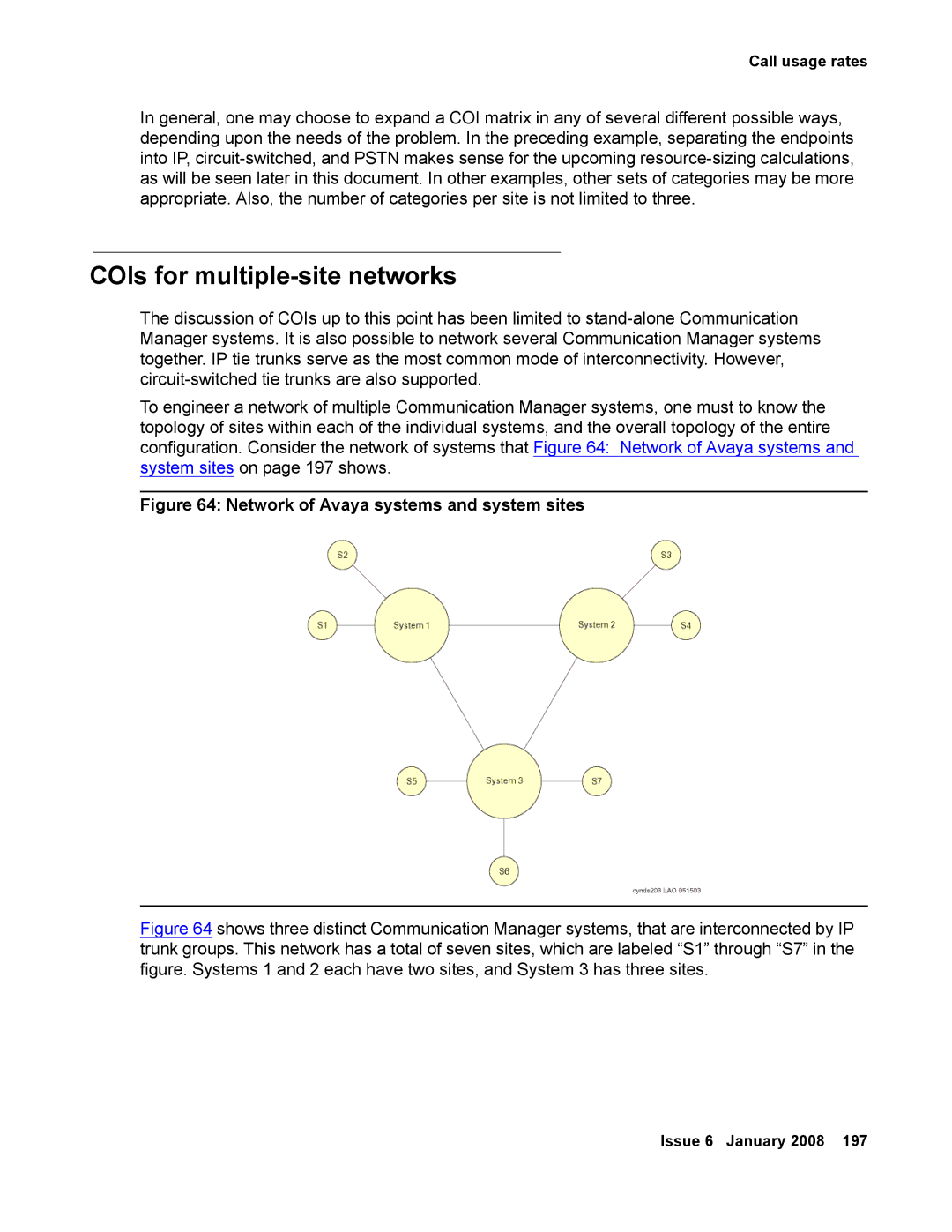
Call usage rates
In general, one may choose to expand a COI matrix in any of several different possible ways, depending upon the needs of the problem. In the preceding example, separating the endpoints into IP,
COIs for multiple-site networks
The discussion of COIs up to this point has been limited to
To engineer a network of multiple Communication Manager systems, one must to know the topology of sites within each of the individual systems, and the overall topology of the entire configuration. Consider the network of systems that Figure 64: Network of Avaya systems and system sites on page 197 shows.
Figure 64: Network of Avaya systems and system sites
Figure 64 shows three distinct Communication Manager systems, that are interconnected by IP trunk groups. This network has a total of seven sites, which are labeled “S1” through “S7” in the figure. Systems 1 and 2 each have two sites, and System 3 has three sites.
Issue 6 January 2008 197
